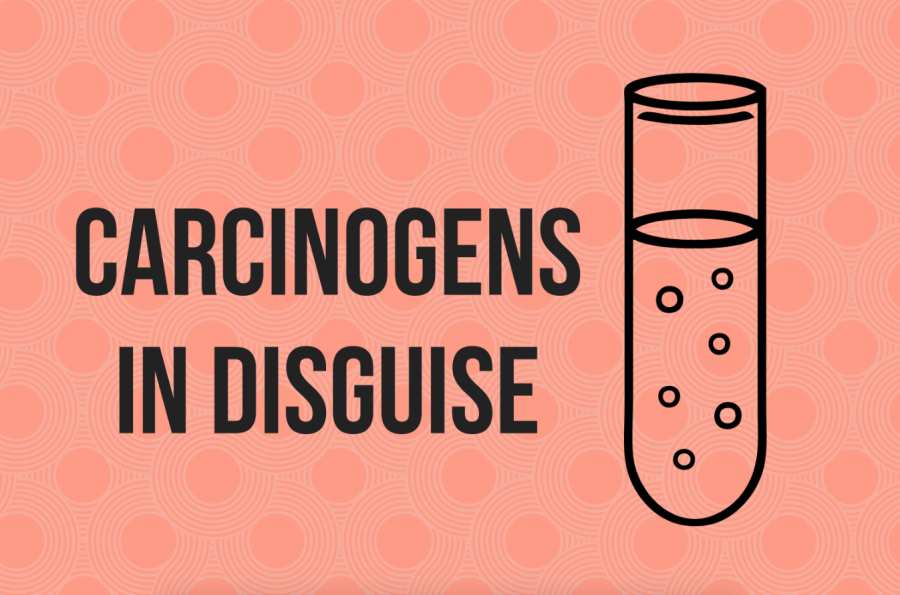Shutting the door on carcinogens
How cancer is invading our homes
November 16, 2018
Cancer is a predator to which the human race is exposed. The first silver bullet for eradication was aimed at smallpox in 1798, followed by the demolition of poliomyelitis (polio) in the 1950s. Even then, at the cusp of victory, populations were bombarded by newer, more complex diseases. None, however, have exploited medical innovations with such cunning as the carcinogen.
As the twentieth century arrived, cancer incidence rates “skyrocketed.” The world was evolving into an even tastier snack thanks to industry and shifting lifestyles. Essentially, a period evolved in which people were living themselves to death. Cancer was usurping more than just genomes, but homes, as well. The amazing part is, carcinogens were being welcomed at the doorstep.
“We’re all exposed to carcinogens every day,” said Amy Baker, biology teacher and former lab researcher for the drug discovery team at New Mexico Tech. “Sunlight is a carcinogen. Water can damage DNA, especially when it’s exposed to sunlight. Oxygen is a carcinogen. No one really knows what causes cancers. You can get philosophical about it or you can say it’s bad luck or different things. There’s no way for science to pinpoint a certain reason.”
With a pat on the back, our first and most popular visitor, aspartame, saunters into the home. This fellow is a familiar guest, but one often overshadowed by that of his colleague, Splenda. Masters at deception, they function to trick the mind into believing in their sugary guise. Known as synthetic artificial sweeteners, they populate the shelves under commercialized, so-called “dietary-friendly” labels. The two are sweet at first, but their appeal usually doesn’t last.
Then, there’s the pervasive formaldehyde; a sporadic mess of a carcinogen, but quite the industrious one. Being a chemical of many talents, he can be found within items spanning from household insulation to the preservatives used in mortuaries, kerosene heaters and unvented stoves. He is common within cosmetics as well, including perfumes, lipsticks, shampoos and facial makeup.
The list is large, and proliferating daily. Alcohol, tobacco and many other guests are invited to the party — too many to properly introduce. Ranked fifth in the highest national global cancer rates, the United States is a swarming hearth of carcinogens. However, carcinogens alone are not what is causing such lethal statistics. The average American’s diet is packed with nutritious duplicity, blurring the line between health and mere consumption. Obesity is one of the leading causes of preventable death in the U.S., rivaled only by that of smoking. It is too easy to blame the vicissitudes of death by cancer upon single, indivisible pioneers. Yet, even genetics — the very “blueprints for life” — can become the culprit.
“[My mom] was diagnosed last October, and through genetic testing, she discovered that she has a gene mutation that increases the odds of developing breast cancer,” human geography teacher Whitney Farmer said. “She doesn’t like diet drinks, but I believe back in her 20s, when I was not around, she did smoke cigarettes. But she’s 58 now, so we’re talking 30-something years without.”
According to the American Cancer Society, the lifetime risk of developing cancer locks in at just under 40 percent for both men and women. The best thing we can do for ourselves is become proactive about our health — that means regular medical checkups, opting for the fruits and veggies every once and awhile, and absolutely no tobacco. But that’s not to say you’ll be fine if you lay off of the diet sodas. Carcinogens are bolstered through behavior and industry, wedging into what minute crevices perforate the modern lifestyle. If we are going to prevent this epidemic from increasing, we need to familiarize ourselves with the enemy, and shut the door on carcinogens once and for all.
“No one actually knows what causes any cancer,” Baker said. “Unnecessary carcinogens sure; [my mother] didn’t wear a lot of makeup, but she wore makeup, and that’s not really healthy. There’s hairspray, there’s perfume. She didn’t do the classic things people talk about. She didn’t smoke, she didn’t drink. But, yeah, she had some carcinogen exposure.”















